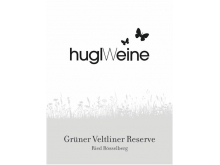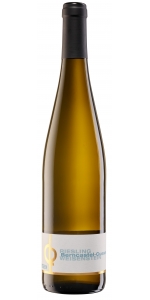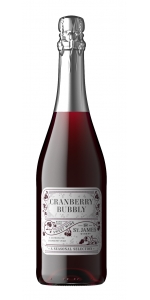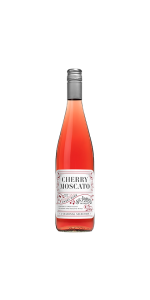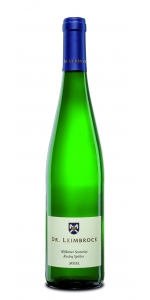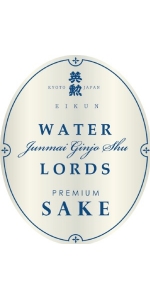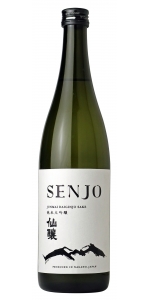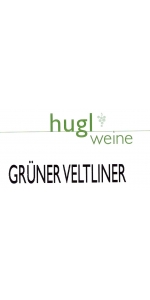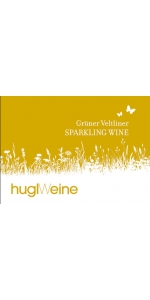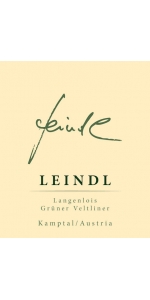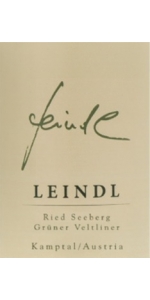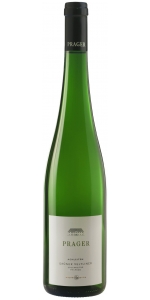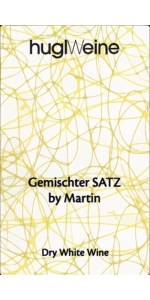Hugl Rosselberg Reserve Gruner Veltliner 2021
6 bottles with free shipping for: $156.00
12 bottles with free shipping for: $276.00
| BUY MORE! SAVE MORE! | ||||||||||||||||||||
|
| Country: | Austria |
| Region: | Poysdorf |
| Winery: | Martin Hugl |
| Grape Type: | Gruner Veltliner |
| Vintage: | 2021 |
| Bottle Size: | 750 ml |
Hugl Rosselberg Horse Hill Gruner Veltliner is made from 100% Grüner Veltliner
A powerful, very ripe Grüner Veltliner, intense and full-bodied with a long finish.
The ripe grapes are processed very gently with 12 hours on the skins and then vinified in Stainless Steel tanks. No Oak.
A firm mineral backbone, gives it the strength of character to work well with many cuisines.
The Martin Hugl Estate
This is a young family-run winery located in the north-east of Austria, in Ketzelsdorf-Poysdorf. The owners Sylvia and Martin Hugl aim to produce fruity, full-bodied wines that are typical of the region and the soils. They make use of the experience of their parents and combine it with their know-how and modern techniques to create high-quality wines. To keep quality high they limit quantity by cutting back, thinning, and green harvesting. A careful handling of the grapes during harvesting is as necessary, along with a cool fermentation in the cellar.
Total production in 2009 was 340,000 liters: 76% white, 24% red (actually no rose and sparkling wine, production - rose is planned for vintage 2010)
For the European market they use only varietal names and offer two types of wines made from Grüner Veltliner: Weinviertel DAC – a regional brand with specially controlled quality and rules for selling it, and Grüner Veltliner classic as a second type of Grüner.
Names of their Grüner Veltliner single vineyards, and quantities produced:
Zapfersberg: 5,000 liters
Rösselberg: 15,000 liters
Waldberg: 25,000 liters
Unführ: 3,000 liters
Luss: 3,000 liters
Baumfeld: 3,000 liters
Junge Geringen: 10,000 liters
Alte Geringen: 15,000 liters
The Martin Hugl Vineyard
In addition to using the best cellar technologies, they emphasize the work in the vineyards and the soils. Prime south- and south-west-facing hillsides and the loam soil ideally suited for wine growing are the basic conditions for high quality. They own and cultivate 22 hectares of vineyards and cooperate additionally with several partners who are cultivating grapes according to their quality targets. They buy grapes from 25 hectares of vineyards.
Grüner Veltliner is the most widely planted grape variety in Austria, accounting for 37% of the country's total vineyard area, about 50,875 acres. Most of these vines are in the large wine region known as Niederösterreich (Lower Austria), along the Danube River, north of Vienna. It also grows in a few other Eastern European countries, such as Slovakia, Yugoslavia and the Czech Republic, but the variety is most closely associated with Austria, where it has been cultivated since Roman times. Grüner Veltliner is the indigenous variety of Austria.
Bastgen Berncastel-Cueser Weisenstein Riesling Spatlese Trocken is made from 100 percent Riesling.
Bright, clean, fresh and zesty. Grapefruit like flavors. Fruity aromas and a nice minerality, typical of the Riesling grape grown on blue slate soil. Round, rich and a very long finish. The grapes for this wine are vigorously selected. Botrytis is not tolerated. At harvest the grapes are fully ripened, have a golden color, and a soft tartness. After a long spontaneous fermentation in a traditional 1000L barrel, the wine just reaches the dry stage. This gives the wine a creamy structure that interplays with ripe yellow and exotic fruit aromas.
They meticulously tend 4.5 ha (11.11 acres) of which 80% is Riesling. The soil is made of slate. Their vineyards are located in Kesten and Brauneberg, on a steep terrace, and planted to 50-year old vines. Fortunately for Bastgen, they own part of the famous Brauneberger Juffer Sonnenuhr. The vines produce very small, ripe berries that are very tasty.
Review:
"This dry Mosel riesling is GG in all but name! Complex nose of white peach and red-fleshed vineyard peach with herb garden notes. Very elegant and polished this glides over your palate, the precision of flavor on the medium-bodied palate is very impressive. Then comes the wet stone and red berry finish that doesn’t want to stop. From organically grown grapes. Drink or hold."
- James Suckling (November 2023), 95 pts
Sweet and tart with bright, festive cranberry colors, aromas and flavors, with an added sparkle. St. James Winery’s Sparkling Cranberry Wine offers refreshing, fresh cranberry acidity with a nice, long cranberry finish.
- High quality carbonated Cranberry wine crafted with integrity, consistency and sustainable practices.
- Made from 100% real fruit with no artificial flavors, colors or sweeteners.
We’ve created a new seasonal for your enjoyment! Cherry Moscato combines the light, tropical sweetness of Moscato wine with the fresh, tart fruit of the Montmorency cherry. This premium blend is a seasonal selection available for a limited time only. Our cellar crew carefully blended our 100% real Cherry fruit wine with our Moscato wine to create a light, refreshing taste experience that is free of added colors or flavors. This spring seasonal wine will make a wonderful Mother’s Day gift or is an ideal addition to Easter celebrations. For a savory option, try serving it with prosciutto and Gorgonzola cheese or with pork steaks and barbecue ribs. For dessert, we recommend pairing this wine with a warm cherry tart à la mode. Look for the newly designed label for this limited selection in our St. James Winery Tasting Room or in a store near you. Remember, with our seasonal wines, they will only be available as supplies last.
Dr. Leimbrock Mulheimer Sonnenlay Riesling Spatlese is made from 100 percent Riesling.
A classic in the residual sweet range that impresses with filigree fruit and mineral spiciness.
The circulating mountain "Mülheimer Sonnenlay" represents a geographical feature of the Moselle. Due to the strong meandering of the Moselle, the mountain was surrounded by the course of the river in geological development in such a way that a so-called circulating mountain arose from it. Located in the northeast-southwest direction, vines are cultivated on both sides of the mountain. The site name "Sonne" and "Lay" (Mosel Franconian for slate) combines the most important prerequisites for the cultivation of Riesling vines. Soils are skeletal-rich, weathered clay-ish shale enriched with sand, stones, and clay. At the beginning of the 1930s, the Mülheim winegrowers proudly pointed out that the local wine was served in the elegant restaurant of the airship "Graf Zeppelin" on its world trips and was obviously very popular.
Pair with spicy dishes, soft cheese, cakes.
Sake Eikun Junmai Ginjo Water Lords is made with Iwai rice.
Eikun sake uses water from a source called "Fusui", rated as one of the top 100 sources of water in Japan. This water source is located just south of the ancient Japanese, and still cultural capital of Japan, Kyoto.
Aromas of macadamia oatmeal cookie, spicy zucchini bread, and vanilla cream with a satiny fruity-yet-dry medium-to-full body and a layered, banana custard, jicama, salted whole nut, apple, and radish nuanced finish. A Wonderfully vibrant and flavorful sake.-Beverage Tasting Institute 94 points (Exceptional)
RATING: 94 points (Exceptional)
CATEGORY: Junmai Ginjo Sake, Sake
ALCOHOL BY VOLUME: 15.3%
TASTING LOCATION: In Our Chicago Tasting Room
TASTING DATE: Dec-05-2012
WINE ID: 200768
Juicy & Refreshing. Full of fruity flavors with clean sweetness. Brewed with Hitogokochi, the special sake rice harvested in Nagano, and natural water slowly filtered down the Japan Alps. In 1866, toward the end of the Edo period, Matsujirou Kurogouchi and his family started a small sake brewery currently called Senjo named after Senjo Ga Take, a 3000-meter peak in the Japanese Alps. Today Senjo Brewery strives to combine art with science and old skill with new technology by adding modern twits to the rich historical traditions of Sake brewing.
Pair with Deep-fried fish with sweet & sour sauce, Young sweetfish tempura (chiayu tempura), Caesar salad.
Hugl Gruner Veltliner (liter) is 100% Grüner Veltliner
This is an intense and concentrated wine offering pleasant citrus and grapefruit aromas, exotic tropical fruits with a hint of freshly ground white pepper. Full-bodied dry wine with a firm mineral backbone.
A firm mineral backbone, gives it the strength of character to work well with many cuisines.
SALE!
Hugl Sparkling Gruner Veltliner NV is made from 100% Grüner Veltliner.
Did you know that most of the base wines for Austrian sparkling wines come from our region? Poysdorf lies on the same line of latitude as Champagne and the climate is similar in both Champagne and the Weinviertel. This gives us enough reasons to expand our portfolio with a top-quality “sparkler”. Of course, it can only be a Veltliner-Sekt!
Pale golden color with a glint of green. Yellow fruit aromas, dry with a soft, juicy structure and a pleasing streak of minerality. Notes of crisp apple and pear.
The ripe grapes are gently pressed and fermented refrigerated.
Vinified in Stainless Steel tanks. No Oak.
A firm mineral backbone, gives it the strength of character to work well with many cuisines.
Leindl Gruner Veltliner Langenlois is made from 100 percent Gruner Veltliner.
This classic Gruner Veltliner comes from the famous wine-growing region of Langenlois. A very typical fruity and fresh Gruner Veltliner offering green apples, juicy, minerality, a pleasant body and a good length. It is ideal with a wide range of dishes.
Cold Fermentation.
Aged on the lees for 6 months in Stainless Steel tank. No Oak. No ML.
Produced from vines of 5-20 years old on slate soils.
Leindl Gruner Veltliner Seeberg Kamptal is made form 100 percent Gruner Veltiner. Medium yellow green. Fine yellow apple fruit, delicate hint of quince and honey, candied orange zest, highly attractive bouquet. Juicy, good complexity, extract core sweet, silky texture, fine acidity bow, fine and salty minerality, great length, secure aging potential, a very finesse Veltliner-style.
Review:
“Inviting nose, with layers of quince and elegant, aromatic herb leading through to a richly textured palate of opulent fruit and a fine acidity.”
- Decanter World Wine Awards 2023, 96 pts
Weingut Prager Stockkultur Achleiten Gruner Veltliner Smaragd is made from 100 percent Gruner Veltliner.
Franz Prager, co-founder of the Vinea Wachau, had already earned a reputation for his wines when Toni Bodenstein married into the family. Bodenstein’s passion for biodiversity and old terraces, coupled with brilliant winemaking, places Prager in the highest echelon of Austrian producers.
Smaragd is a designation of ripeness for dry wines used exclusively by members of the Vinea Wachau. The wines must have minimum alcohol of 12.5%. The grapes are hand-harvested, typically in October and November, and are sent directly to press where they spontaneously ferment in stainless-steel tanks.
Stockkultur is a 0.3-hectare plot at the top of Achleiten and was purchased by Toni Bodenstein in 2005. The name refers to the old style of training each vine to a single stake; the traditional method of vine cultivation in the Wachau before the 1950s. The vines planted in 1938 are among the oldest in the Wachau.
Tasting Notes:
Prager’s stylistic signature is that of aromatic complexity coupled with power and tension. High-density planting and long hang times ensure ripe fruit flavors and concentration, yet allowing leaves to shade the fruit lend vibrant aromatics of grasses, herbs, and wildflowers. Minerality is a constant feature of any Prager wine.
Food Pairing:
With minimum alcohol of 12.5%, Grüner Veltliner Smaragd is a concentrated and full-bodied dry white wine. Its intensity of flavor and ripeness of fruit make it ideal with high-integrity ingredients such as seared white fish or sautéed spring vegetables. Grüner Veltliner is a classic accompaniment to Wiener Schnitzel.
Review:
From vines planted in 1937 and picked as the first of the Smaragd wines, the 2020 Ried Achleiten Grüner Veltliner Smaragd Stockkultur (planted with 15,000 vines per hectare) opens with a spectacular deep and complex but refined, fresh and flinty bouquet with intense, ripe pear and biscuit aromas. On the palate, this is a dense and lush yet pure, elegant and complex, wide and powerful but also mineral Achleiten with a long, finely tannic and still sweet finish (due to more than 30 grams per liter of dry extract). Tasted at the domaine in June 2021.
At Prager, I could not determine that 2020 would be inferior to the 2019 vintage; on the contrary, the 2020 Smaragd wines fascinated me enormously in their clear, cool, terroir-tinged way. A 38% loss had occurred mainly because of the hail on August 22, although predominantly in the Federspiel or Riesling vineyards. There was no damage in the top vineyards such as Ried Klaus, Achleiten or Zwerithaler. "Interestingly, the vines are in agony for about two weeks after the hail. There was no more growth, no development of ripeness and sugar," reports Toni Bondenstein. The Veltliner then recovered earlier, while even picking a Riesling Federspiel in October was still a struggle. "Why Riesling reacted more intensively to the hail, I don't know myself either," says Bodenstein. Whole clusters were pressed to preserve acidity and to compensate for the lower extract, and compared to 2019, the 2020s were left on their lees longer. In June, however, the 20s in particular showed outstanding early shape.
-Wine Advocate 96 Points
Hugl Gemischter Satz is made from 50% Grüner Veltliner, 40% Gelber Muskateller and 10% Riesling.
Gemischter Satz" has a long history in Austria. It is a field blend where different grape varieties are picked at the same time and vinified together:
In Vienna, the tradition of planting different and complementary grape varieties together in a vineyard – then harvesting and fermenting them together as well – has survived to the present day as Gemischter Satz. Thanks to the dynamic efforts of ambitious winegrowers, this traditional rarity has grown in stature and recognition to become the calling card of viticulture in Austria’s capital city.
Gemischter Satz is very popular in Vienna’s Heurigen (the Viennese term for wine taverns). Historically, Heurigen were simple places, where vineyard owners would open their doors during wine season to serve glasses of this years wine and juices to guests. At most, a plate of cold meats and cheese could be served along with the delicious wine.
For the traditional wines of Wiener Gemischter Satz - the planting of different grape varieties together in one vineyard - a unique style profile has been developed; a style that reflects the wine's origin-typical aromas and flavours. The regulation for the Wiener Gemischter Satz DAC requires that at least three white quality wine varieties must be planted together in one vineyard that is listed in the Viennese vineyard register as Wiener Gemischter Satz. The highest portion of one grape variety must be no more than 50%; the third highest portion must be at least 10%. Wines without vineyard indication must be dry and without any prominent wood flavour. The Wiener Gemischter Satz DAC can be marketed with an indication of vineyard site also. Single vineyard wines do not necessarily have to correspond with the “dry” taste indication, and they cannot be released for sale prior to March 1st of the year following the harvest. Minimum alcohol % of 12.5%.
Adds an enthusiastic Herbert Schilling, head of Vienna's Regional Wine Committee: “With the Wiener Gemischter Satz DAC, we've achieved a milestone in the consistent, years-long quality policy for wine growing in Vienna. The new regulations sharpen the origin profile of Wiener Gemischter Satz and, at the same time, reflect Vienna´s diversity in the glass.”
- back
Tinel Blondelet Pouilly-Fume Genetin is made from 100 percent Sauvignon Blanc.
The soil is made of "caillottes" (limestone stones).
"Genetin" is a name given in homage to the original name for Sauvignon Blanc: Muscat Genetin. The Genetin bottling is normally reserved for the most powerful Cuvées in the winery. No oak.
Produced from 25 year-old vines coming from the Villiers limestone terroir, situated in Bouchot.
Traditional vinification in thermo-regulated stainless steel tanks. Following a gentle pressing the juice is then fermented at controlled temperatures before being left to mature on its fine lees to gain extra depth and concentration before bottling in the next spring.
Matured on fine lees bringing finesse to the wine and bottled late in order to let all its roundness evolve.
Yield: 55 hl/ha
A golden colored and mineral wine with elegance and finesse. Can be cellared for 2-3 years.
A mineral-laced smoky accent and citrus aromas. Elegant and powerful on the palate.
Food pairing: shellfish, goat cheese such as “Crottin de Chavignol”. Perfect also as an aperitif.
Review:
- Wine & Spirits (Regional Tasting Report, Spring 2022), 91 pts
Bihan Le Touraine Sauvignon Blanc is made from 100 percent Sauvignon Blanc.
Olfactory aspect : Limpid and brilliant with a pale gold
Nose: pronounced white floral bouquet
Palate : Dry, harmonious tangy edge with a lively finish

